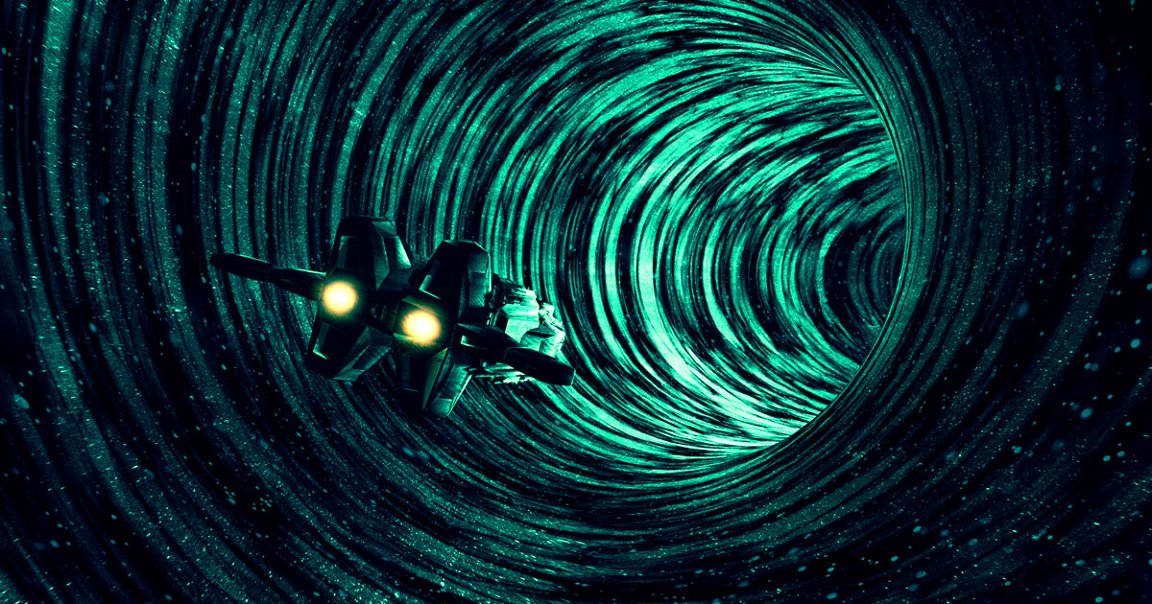
Connecting Black Holes
Wormholes are a fascinating concept in physics that postulate passages that connect two different points in spacetime — typically black holes — together.
Think “Interstellar” or “Event Horizon.” These wormholes could allow a person to jump into one black hole and emerge in a totally different galaxy, in a totally different part of the universe.
Unfortunately, most leading hypotheses surrounding wormholes suggest that they would collapse as soon as they formed due to instability. However, one new theory slated to be published in The Journal of Modern Physics D posits that, actually, wormholes can remain stable enough for objects to enter on one side and leave through the other.
Wormhole Metrics
The theory, by Ecole Normale Supérieure de Lyon computer scientist Pascal Koiran, relies on the Eddington-Finkelstein metric to describe the movements of objects in and around a wormhole. This metric differs from the more often used Schwarzschild metric, which breaks down once an object reaches the event horizon, meaning the point at which no object can escape the pull of a black hole, according to LiveScience‘s writeup of Koiran’s work.
Using the Eddington-Finkelstein metric, though, Koiran was able to mathematically simulate a path for an object into a black hole and through a wormhole instead of breaking down at the event horizon.
Of course, this doesn’t necessarily mean that jumping through any ol’ black hole will send you across the universe. However, it does pose a very interesting theory that shows that wormholes wouldn’t just instantly collapse as soon as they’re created.
We probably wouldn’t risk it, though, and would just wait on some startup to create a warp drive.
READ MORE: Wild New Theory Suggests Wormholes Could Be Stable Shortcuts Through Space-Time [LiveScience]
More on wormholes: Physicists Propose New Idea for “Human-Safe” Wormholes